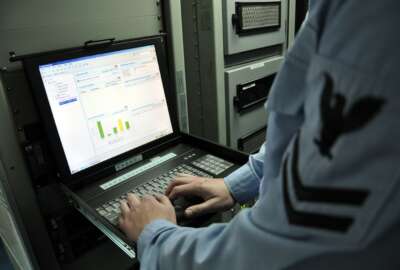Final 2024 bill grants DoD some extra budget flexibility
Lawmakers agreed to increase the amount of money DoD can reallocate without prior permission from Congress, but rejected other calls for budget flexibility.
It’s almost six months late, but the final Congressional agreement to fund the rest of the federal government for 2024 would deliver $825 billion to the Defense Department while also adding a bit of budget flexibility that could help DoD deal with late appropriations and other mid-year surprises in future years.
The process changes stop short of what the department and reform advocates have been asking for, but would grant more authority for the department to move money around within its accounts without getting explicit permission from Congress — so-called “below threshold” reprogrammings. As of now, only $10 million at a time can be internally reprogrammed inside DoD’s procurement, operations and maintenance, R&D and military personnel accounts. The new bill raises those thresholds to $15 million.
It’s the first time in 20 years those thresholds have been meaningfully increased, and they generally haven’t kept pace with inflation — a fact lawmakers recognized in the new bill.
And the current $10 million thresholds are much too small, said Peter Levine, a former undersecretary of Defense who also served on the congressional commission on Planning, Programming, Budgeting and Execution (PPBE) reform.
“It’s strikingly low level in a budget that’s $800 billion. It may sound like a lot, but it is a very small share of the Defense budget,” he said during the PPBE commission’s formal rollout event for its final report earlier this month, before the spending bill’s passage. “Things change on a daily basis, things change on a monthly basis, new threats emerge, we have new technological opportunities, and we need to be able to respond faster. We can spend so much time fighting over the little things that we lose the big picture. We just need to be able to give the department flexibility to deal with those little things so that we can focus on the big picture and get the big picture right.”
Among 27 other recommendations, the commission’s final report recommended even higher reprogramming thresholds: $25 million worth of flexibility inside DoD’s Research, Development, Test and Evaluation accounts; $40 million for procurement; $30 million for operations and maintenance; and $15 million for military personnel.
Lawmakers decline other proposals for budget flexibility
Congress wasn’t willing to go that high, nor was it ready to push ahead with many other recommendations for budget flexibility — at least not this year. In a report accompanying the new bill, lawmakers directed DoD not to make any other changes to the structure of its annual budget proposals to Congress.
Similarly, for the second year in a row, appropriators included language blocking DoD from starting any new programs under its Software and Digital Technology Pilot Program. That’s an initiative designed to reform the way the department pays for software-intensive programs by letting it fund them from a single appropriations category, or color of money, rather than having to determine whether it can legally use procurement, R&D or operation and maintenance funding. DoD did not propose any new “colorless” pilot programs in its 2024 or 2025 budgets.
The PPBE commission recommended expanding the approach to include all software programs, but also suggested taking the general concept even further: funding even larger non-software systems with a single appropriation type.
“When it comes to colors of money, we’re talking about placing the funding in the predominant activity,” said Lara Sayer, the commission’s executive director. “If you have an aircraft program, do you really want to have to split up [operations and maintenance] and sustainment and then production funding? If it’s an aircraft program, I want to use my aircraft procurement budget to do my software development, production, sustainment, for the entire platform.”
In their report, Congressional appropriators signaled an openness to implementing some of the commission’s recommendations, but said those decisions would require consultation with DoD and industry, and that lawmakers want to see quantitative data to back up any proposed changes. They also noted that the strict oversight measures that are currently in place were prompted by DoD’s past missteps with cost growth and financial mismanagement.
Adding flexibility while maintaining oversight
Susan Davis, a former California Congresswoman who also served on the commission, said maintaining a trust relationship between DoD and Congress is critical, but the commission thinks it’s found ways to add flexibility to the budget process while still maintaining congressional oversight.
“First, we encourage improved in-person communication between the DoD and Congress. That sounds pretty simple, but the reality is that it doesn’t always happen, and we think it could be transformative,” she said. “We recommend the DoD, the services, and DoD components establish a process that engages with the appropriate congressional committees on a more frequent basis to improve communication, and share relevant information with Congress. And DoD should work with Congress to establish common formats for its budget justification books. There should be consistent language and appropriate depth of budgetary and programmatic content. And we recommend that the DoD establish classified and unclassified searchable repositories so both branches can be engaged and sharing information together. Overall, we think Congress will be willing to grant the DoD more flexibility if the DoD improves their transparency and communications with Congress.”
Copyright © 2025 Federal News Network. All rights reserved. This website is not intended for users located within the European Economic Area.
Jared Serbu is deputy editor of Federal News Network and reports on the Defense Department’s contracting, legislative, workforce and IT issues.
Follow @jserbuWFED







